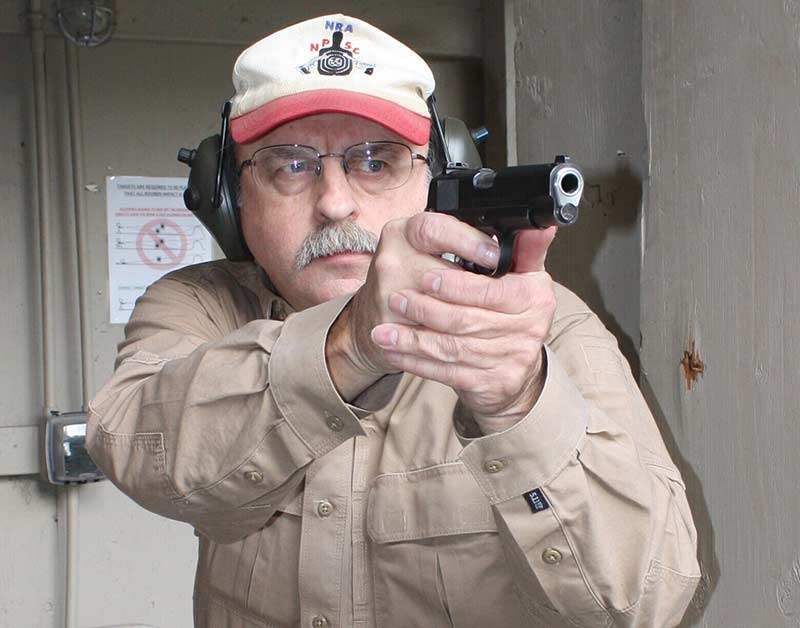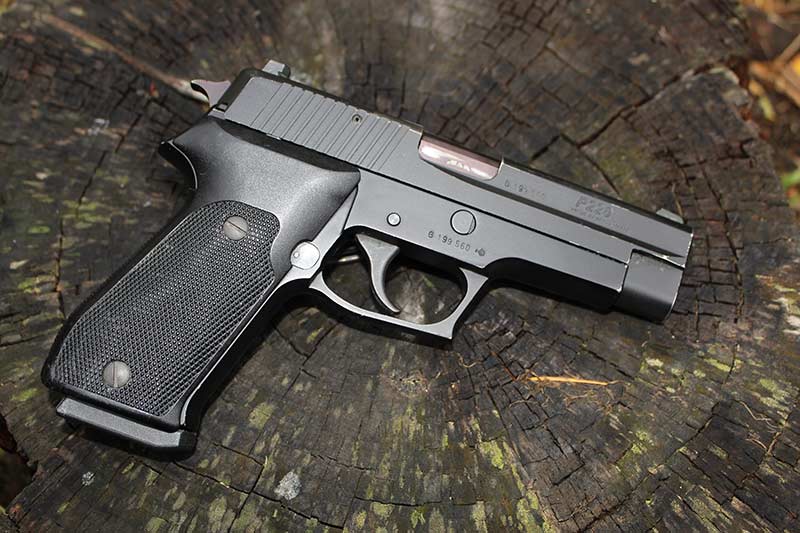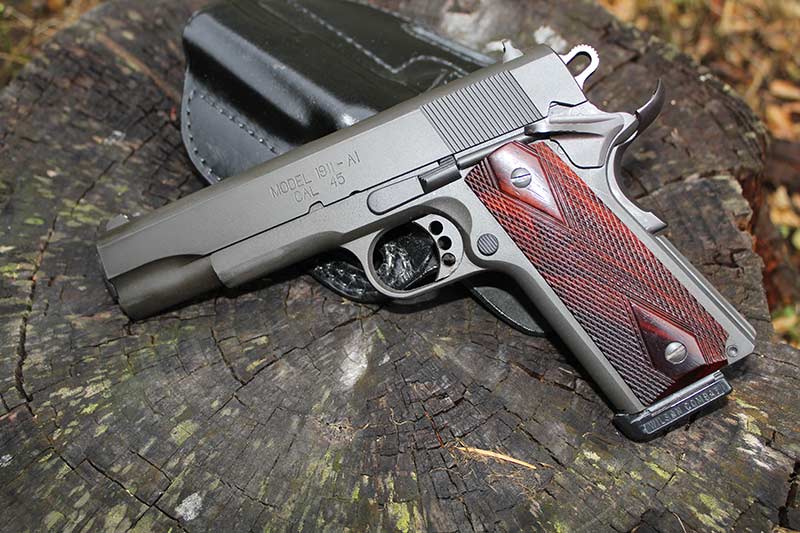Large Frontal Mass
The “Best” Defense Round Debate Continues
Anybody who remembers the 1980s and early 90s will certainly recall the repetitive articles ad nauseum about “9mm v. .45 ACP.” It seemed like every other month, in one periodical or another, the debate would be resurrected with no clear resolution.
A few years ago, I wrote a piece focusing on the only legitimate comparison I could imagine — .45 ACP versus .45 Colt. Any other comparison would seem like apples and oranges.
So, a couple of weeks ago, I threw this question to a bunch of my readers and social media pals: “What makes the .45 ACP the best personal defense caliber?” Oh, I’m going to burn in Hades for that one, but in the meantime, the query actually garnered dozens of interesting, albeit sometimes terse, and sincere responses, and honestly, they all made sense.
One guy wrote, “Skinny and quick will do the trick, but fat and slow is the way to go.”
Another chap declared — probably a bit tongue-in-cheek — “.45 comes pre-expanded.” I used to think that about the old Speer “Flying Ashtray” JHP, a 200-grain projectile with a gaping hole in front, but some people back in the day complained about feeding problems, though I personally never experienced such a malfunction.
Some folks took time to think their answers through a bit, frequently reminding me that accuracy is the important factor, regardless what caliber someone happens to be shooting. Their wise counsel also noted how practice and more practice is ultimately the key to proficiency and accuracy. It’s not what you hit ‘em with but more about where you hit ‘em.
I got a big laugh when a pal of mine from Montana replied, “The fact that I have 10k pieces of brass for it.” There’s an argument I find impossible to dispute, since my own workshop is something of a gathering place for spent cartridge cases.
And then came a response from a lady gun retailer of my acquaintance, which put the entire discussion into what I’ll call a Jeff Cooper-kind of perspective: “If you miss, they are all .0 caliber.” ‘Nuff said.
Smack Down
This wasn’t intended to be a discussion about accuracy, nor about energy, at the muzzle or downrange.
Each carry gun caliber has its believers and critics, and most of them have track records we could debate until Hell freezes. Other cartridges can outperform the .45 ACP in terms of muzzle energy, depending upon the specific load.
I approached this subject thinking essentially about frontal mass, primarily because more than 40 years ago, a sheriff’s deputy pal observed late one night when gun folks often have their best conversations, “I’m a firm believer in a big, slow-moving bullet.”
Still, I wanted to see what other people think, and why.
Although the years have provided time to develop some faster .45-caliber loads that can warp over a chronograph at better than 1,000 fps using lighter bullets, my experience with the old reliable 230-grain FMJ running in the neighborhood of 800-850 fps is that it has accounted for a large number of terminal smack downs. Even at the slower velocities, that big frontal mass can hit like a sledgehammer, and regardless of who you are, it’s going to hurt.
Maybe what ignited my gray matter was reading a report from a few years back involving a gent stopping a grizzly up in Alaska with a .45 ACP; a confrontation I’d never want to personally experience, but in emergency, you do the best with what you have at the moment. If a .45 is what you’re packing when the beast comes calling, I’ll paraphrase a line from an old John Wayne western: “It’s not all I’ve got, it’s what I’ve got.”
My favorite choices for .45 ACP loads specifically feature a 185-grain JHP, a 200-grain plated lead pill or a 230-grainer, either a JHP, plated or FMJ. With the right propellant, all of these projectiles pack a fight-stopping punch.
Though my personal tastes lean toward wheelguns in .41 Magnum, my EDC during business hours is a .45-caliber Colt lightweight Commander topped with Trijicon night sights. It’s a matter of practicality; the .45 holds more rounds, it is lighter for all-day carry and it certainly conceals better than an N-frame Smith & Wesson!
Add to that the potential for over-penetration with the magnum—I’ve shot completely through at least one hefty deer using a .41 Magnum—while with the .45 you’re far less likely to experience over-penetration, especially if using hollowpoints.
Can of Worms
This is the proverbial can of worms. Pandora’s Box. The Genie’s bottle. It’s my fault.
Honestly, it is enlightening to get reactions from gun people, each with their preferences, because it’s been my experience that people who carry hardware on a daily basis have made their choices for a variety — and combination — of reasons. And we can be assured they all speak from the heart because they’re not selling anything, they don’t get a commission for preferring one round over another, and they really have nothing to prove.
What works for each legally armed citizen is his or her personal choice, nobody else’s. And that brings us back around to the reactions I got from fellow shooters. One man obviously put a lot of thought into this:
“The closest thing to one hundred percent one-stop shots out of a handgun is a 125-grain Jacketed Hollow Point out of a four inch .357 Magnum!! I think that it all boils down to shooting the largest caliber that you are comfortable shooting and being able to accurately place your shots exactly where you want them while you’re under pressure!! After all never forget for a second that you’re fighting for your life or the lives of the ones you love!!!”
How does one argue with such logic? I’ve carried a .357 Magnum with 158-grain JHP handloads on the trail for many years and never felt under-gunned.
Then, there are proponents for the .40 S&W, a cartridge which I recently saw someone declare was headed for the scrap heap. It amused me because I know several people who carry sidearms in that caliber and I don’t think the .40 S&W is going anywhere. It’s a snappy round that may be the victim of the same thinking that occasionally relegates the .41 Magnum to the cemetery, which is utter nonsense.
It might just be I wasn’t asking the question from the perspective of someone who believes the .45 ACP actually is the best personal defense caliber, but more in the spirit of why would anyone believe it’s the best in a field loaded with other options?
It’s a question for which there may be no real answer, and certainly no incorrect answer.
Send your comments to [email protected]







